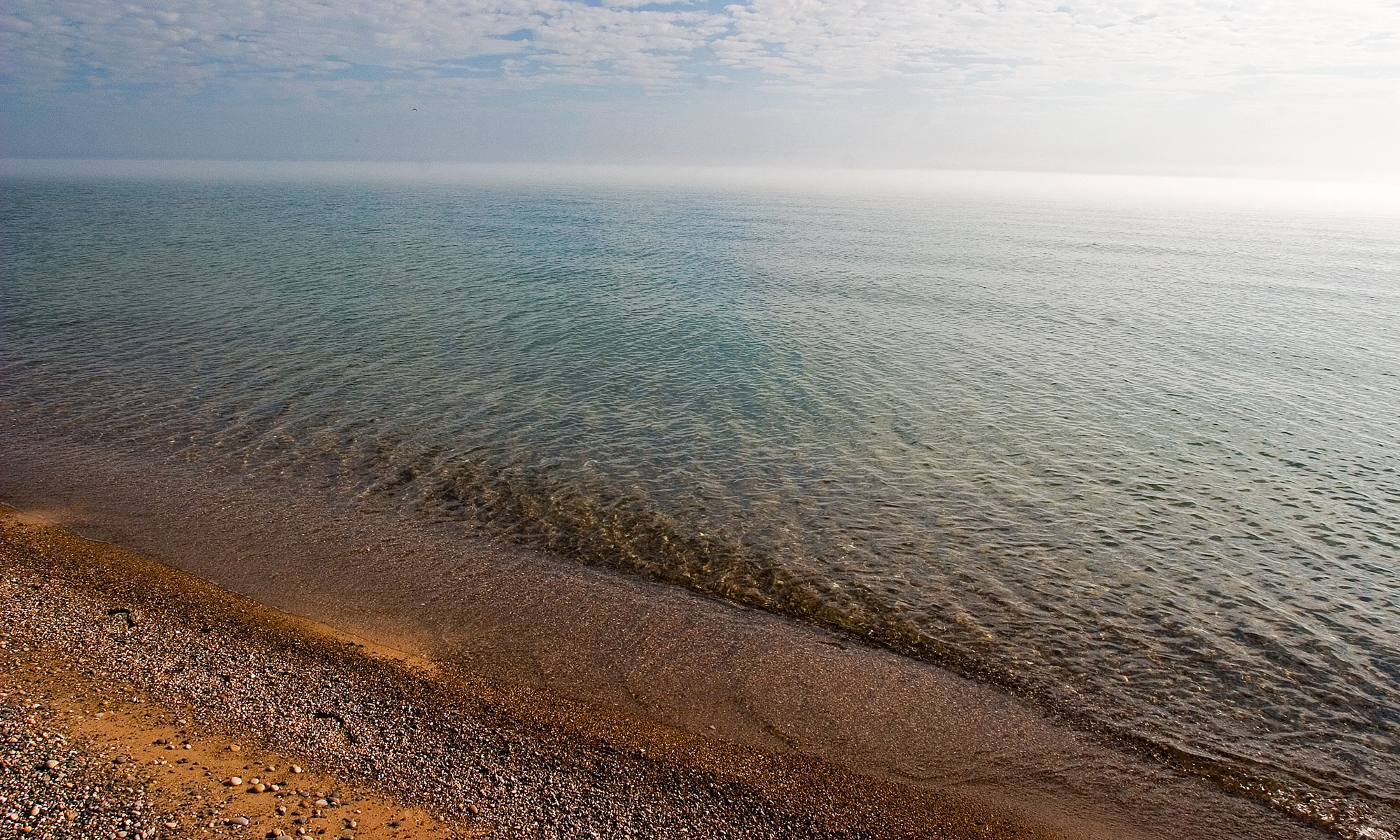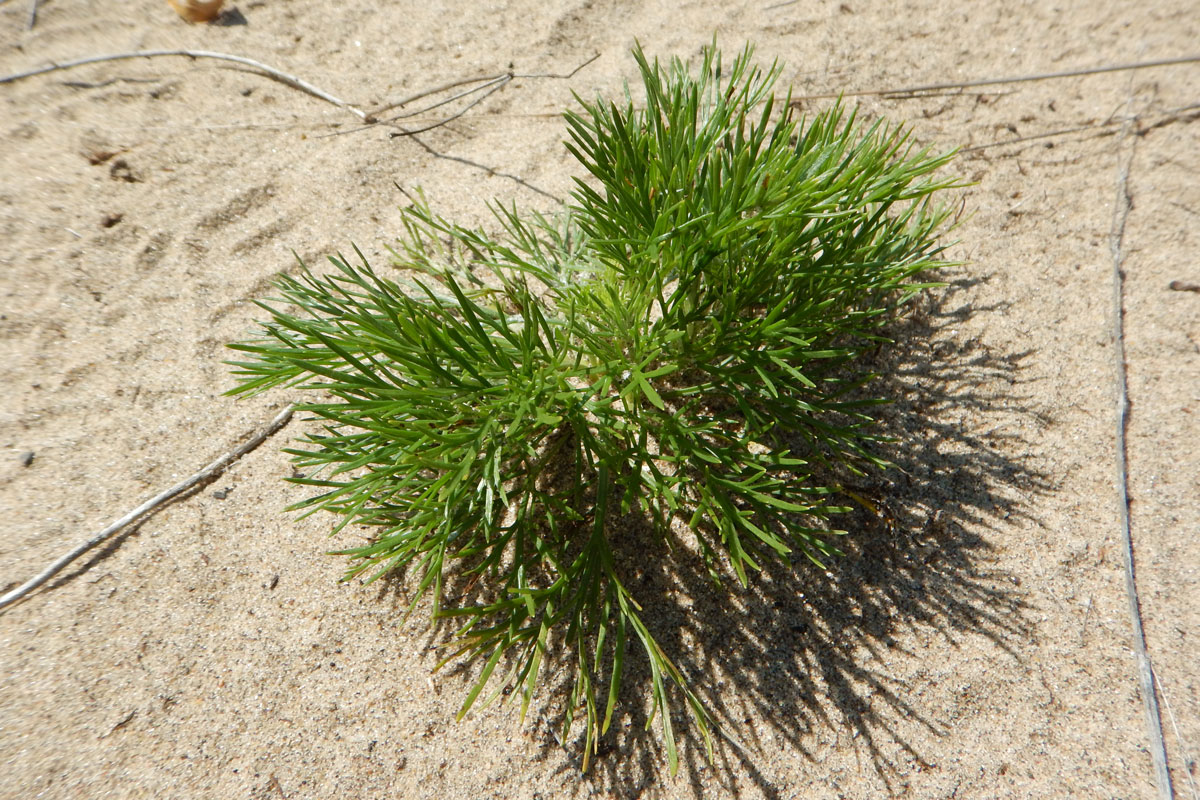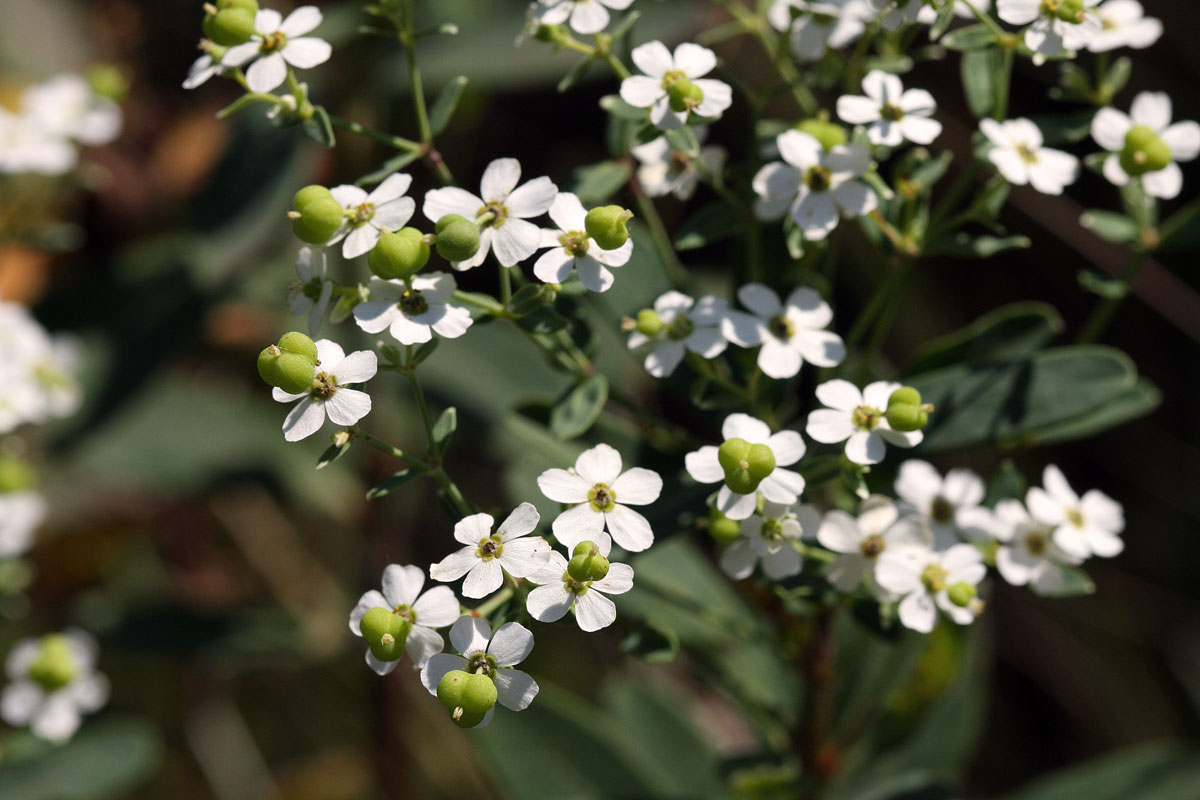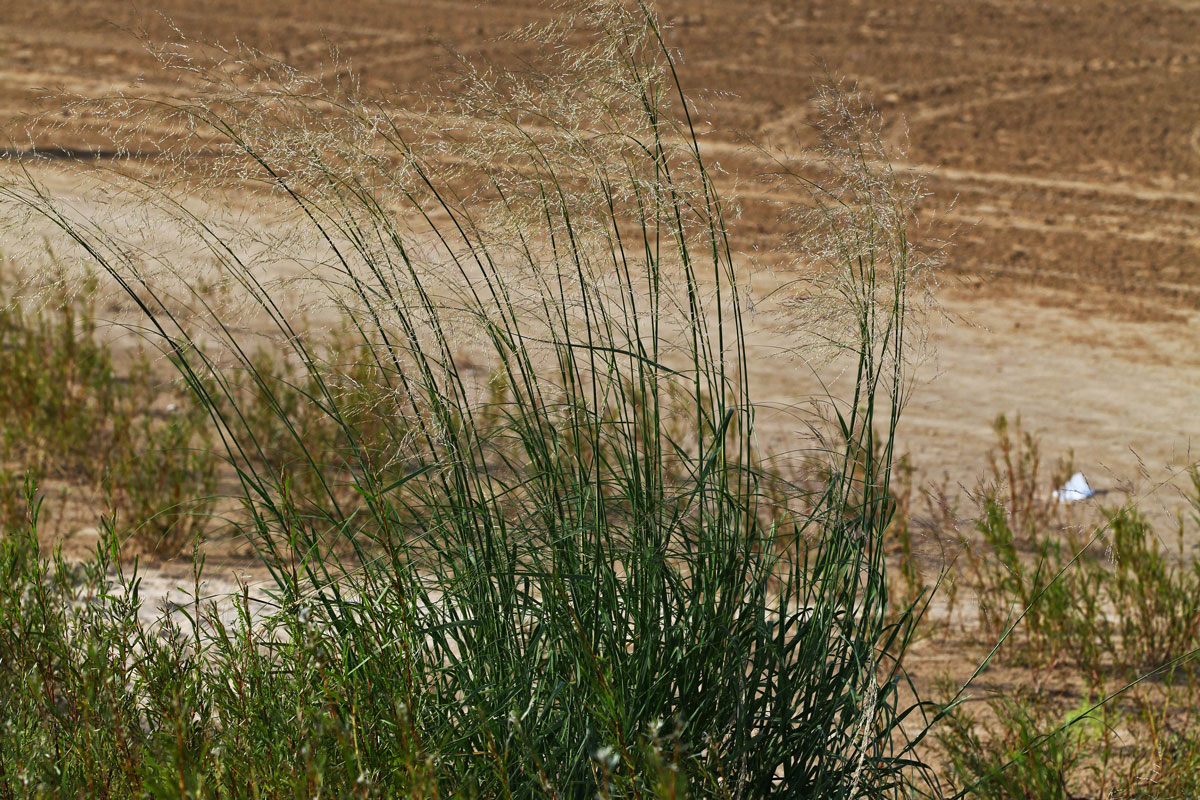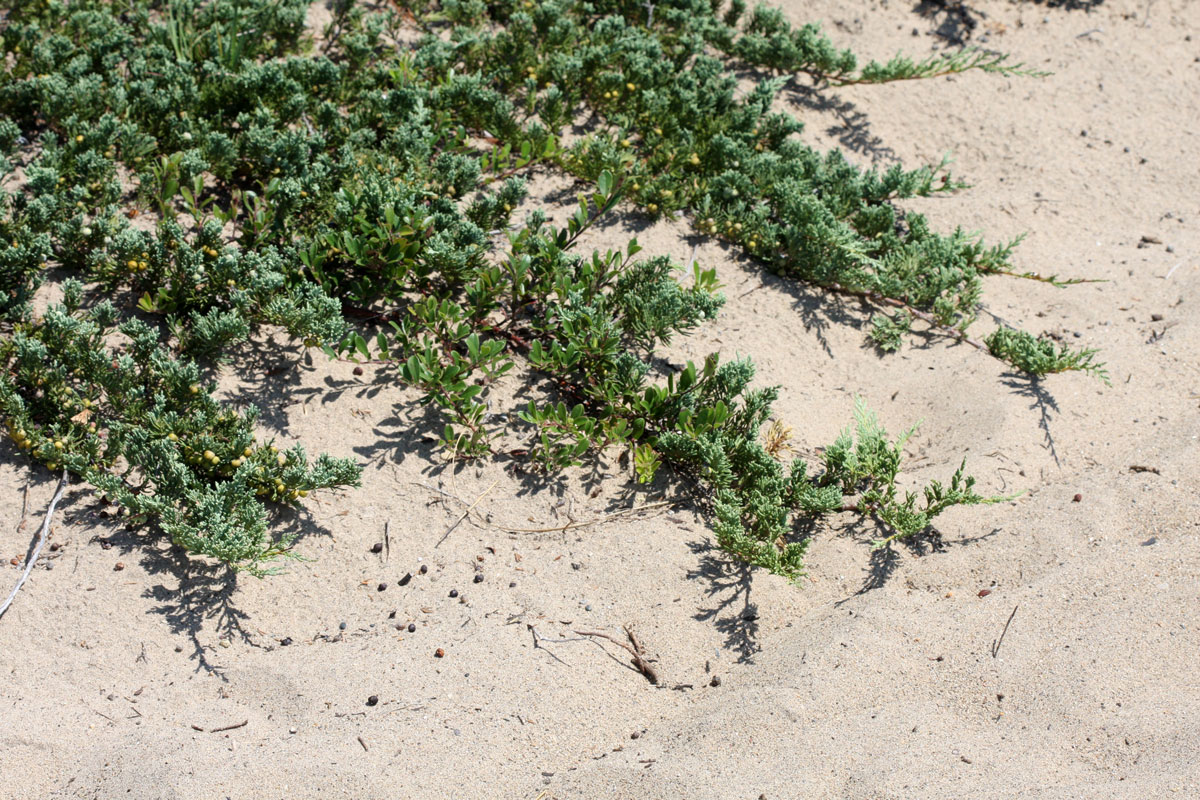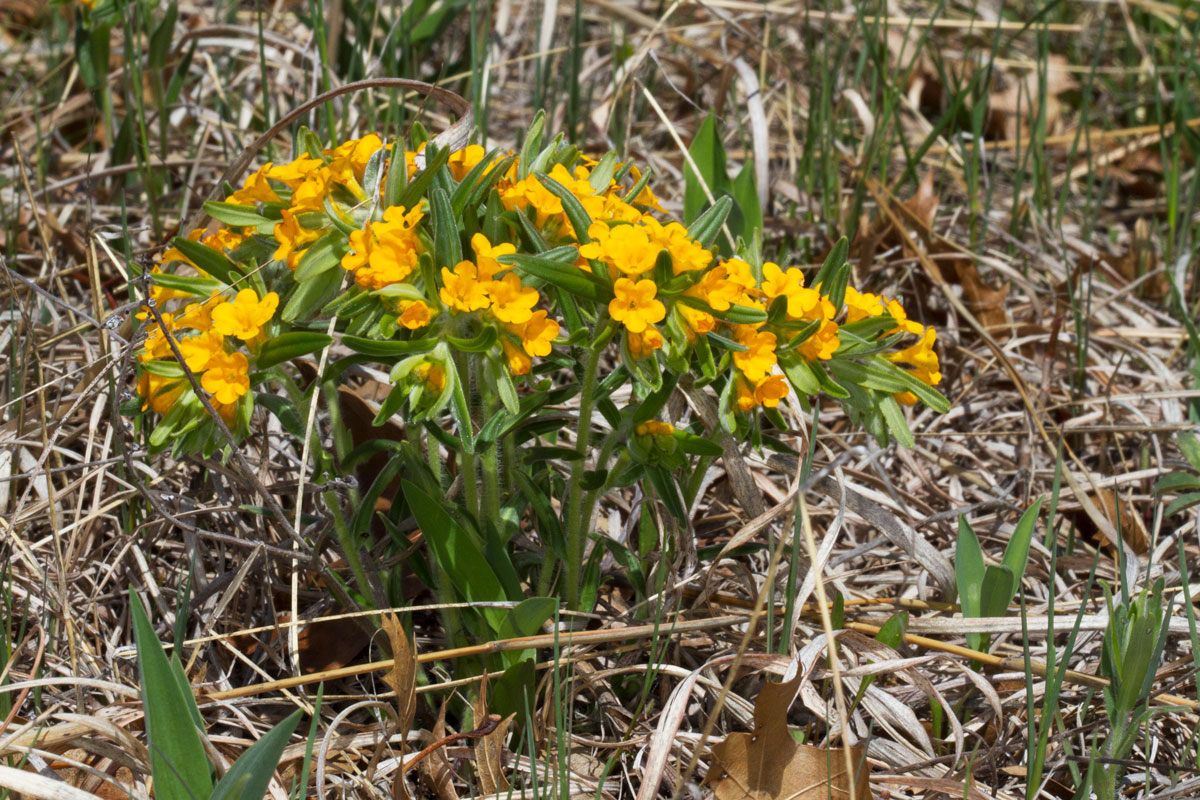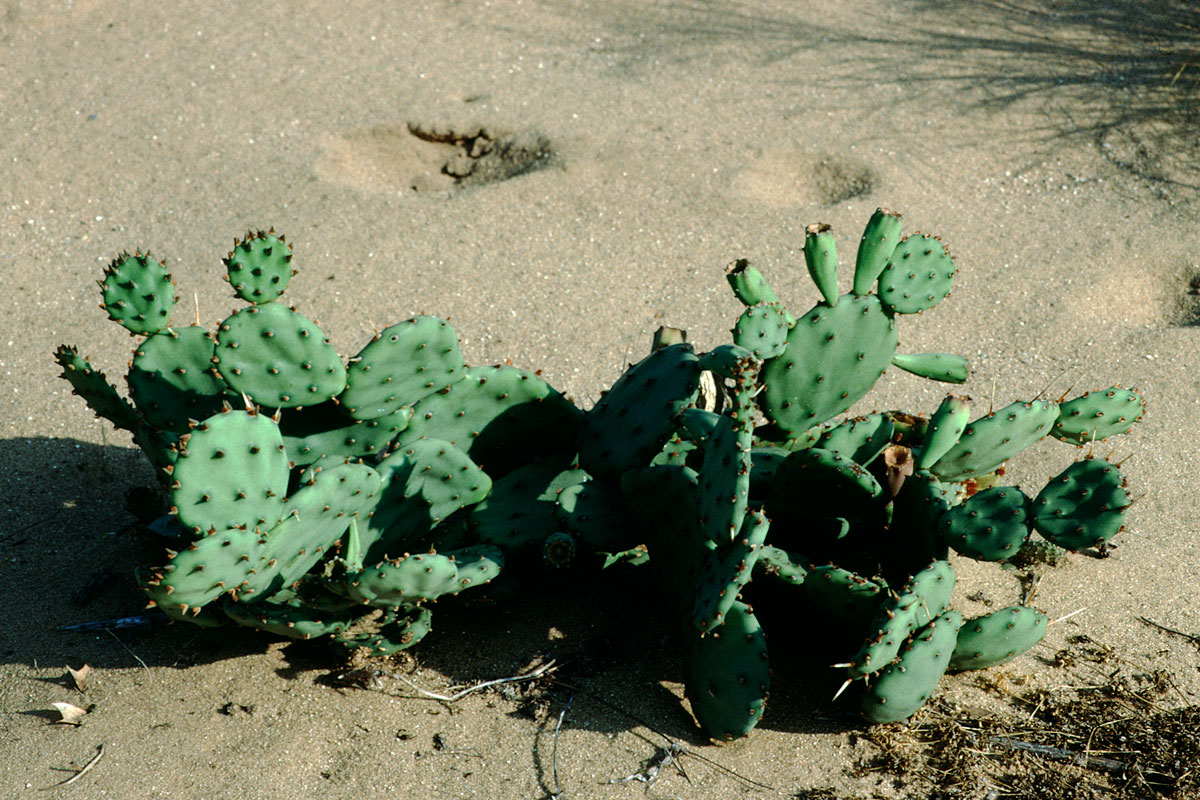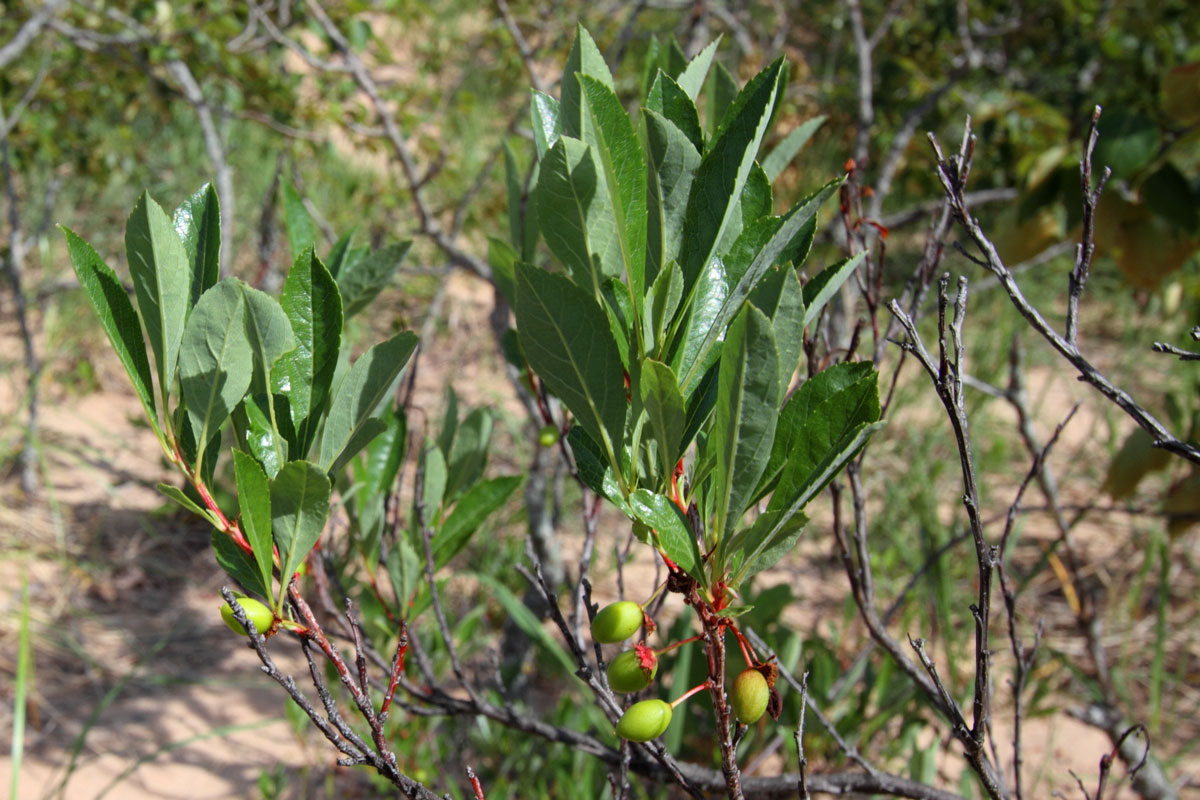The rear dunes are older, protected from the waves by the foredunes, and support a more established plant community. Early pioneer plants have left behind a layer of humus, which nourishes the characteristic dunesland plants including Horizontal Juniper, Bearberry, Sand Cherry, Puccoon, Prickly Pear Cactus, Little Bluestem, Canada Wild Rye and Sand Reed Grass. As these plants add additional humus to the soil, prairie, dominated by Little Bluestem, takes hold.
====
West of the beach over the foredunes are the rear dunes, an older area protected from even the largest waves. The ground here is coated by a thin layer of humus (decayed plant material) left by early pioneer plants. With the added humus, the rear dunes’ soil is able to hold more water and nutrients than soil in the foredunes, and thus support more types of
plants. Eventually, a prairie will form when enough humus has built up.
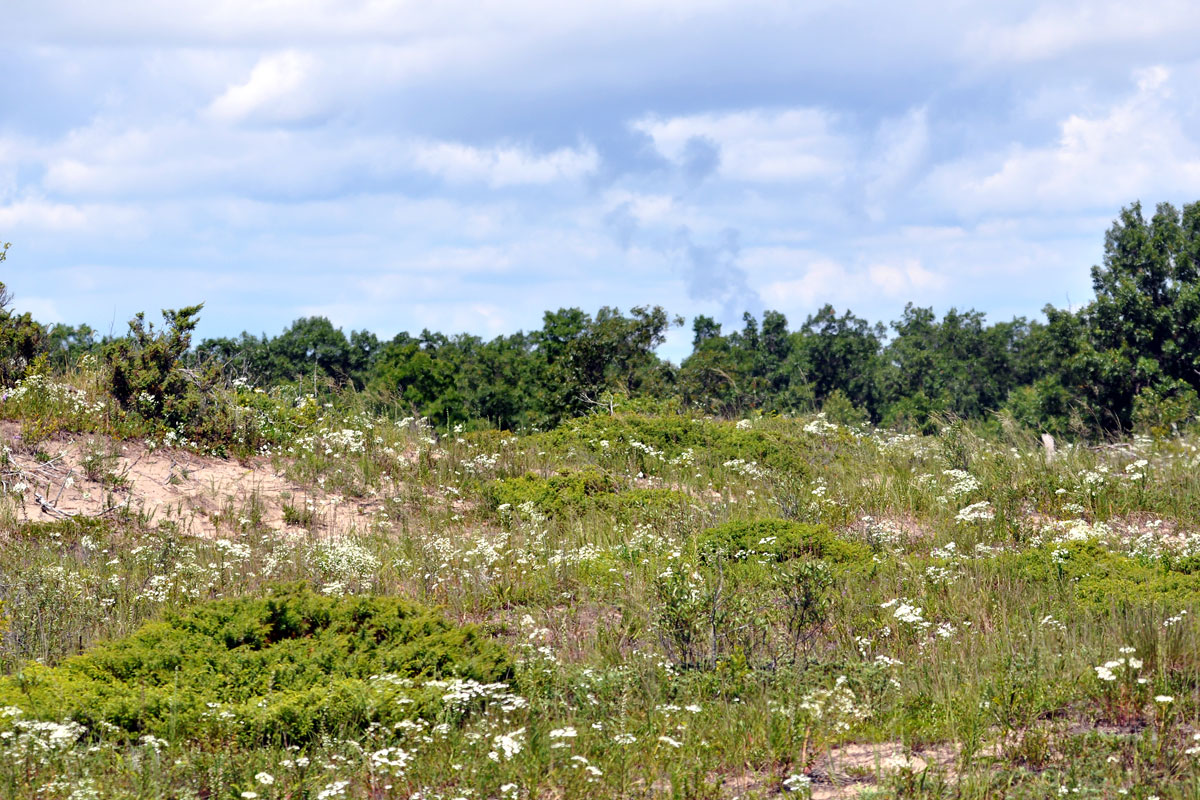
Hardy plants
Plants that grow on the rear dunes are tough! Though they are protected from the waves, these plants must still survive growing in only a small amount of humus while simultaneously braving Illinois’ extreme summer heat and cold winter winds.
